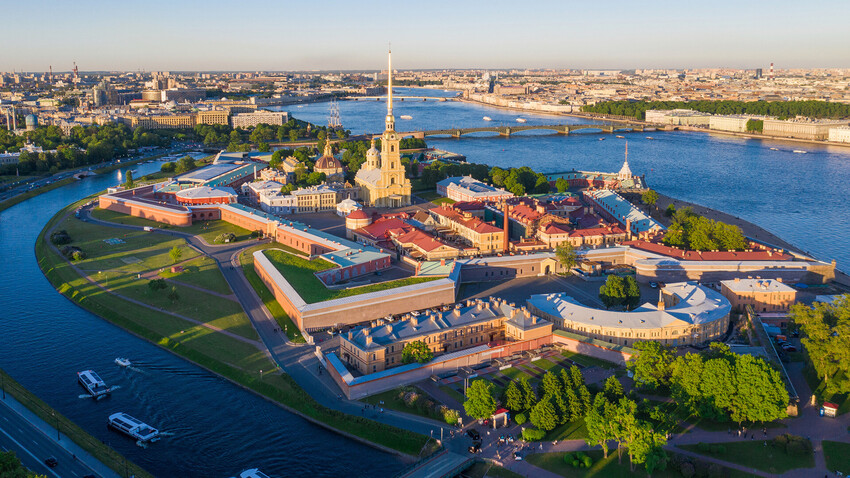
St. Petersburg has always been broadening its borders. Over three centuries, its area has grown from 12 to 1,439 square kilometers.
From the moment of its founding in 1703, St. Petersburg was the ‘guberniya’ (‘main’) city of the St. Petersburg Governorate. The governorate itself changed its name along with St. Petersburg: in 1914, it became the Petrograd Governorate, in 1924 – the Leningrad Governorate.
In 1931, Leningrad was distinguished from the region and it became a city of republican subordination. Gradually, it began implementing former suburbs into its borders.
Currently, 21 villages and 9 cities are part of St. Petersburg.
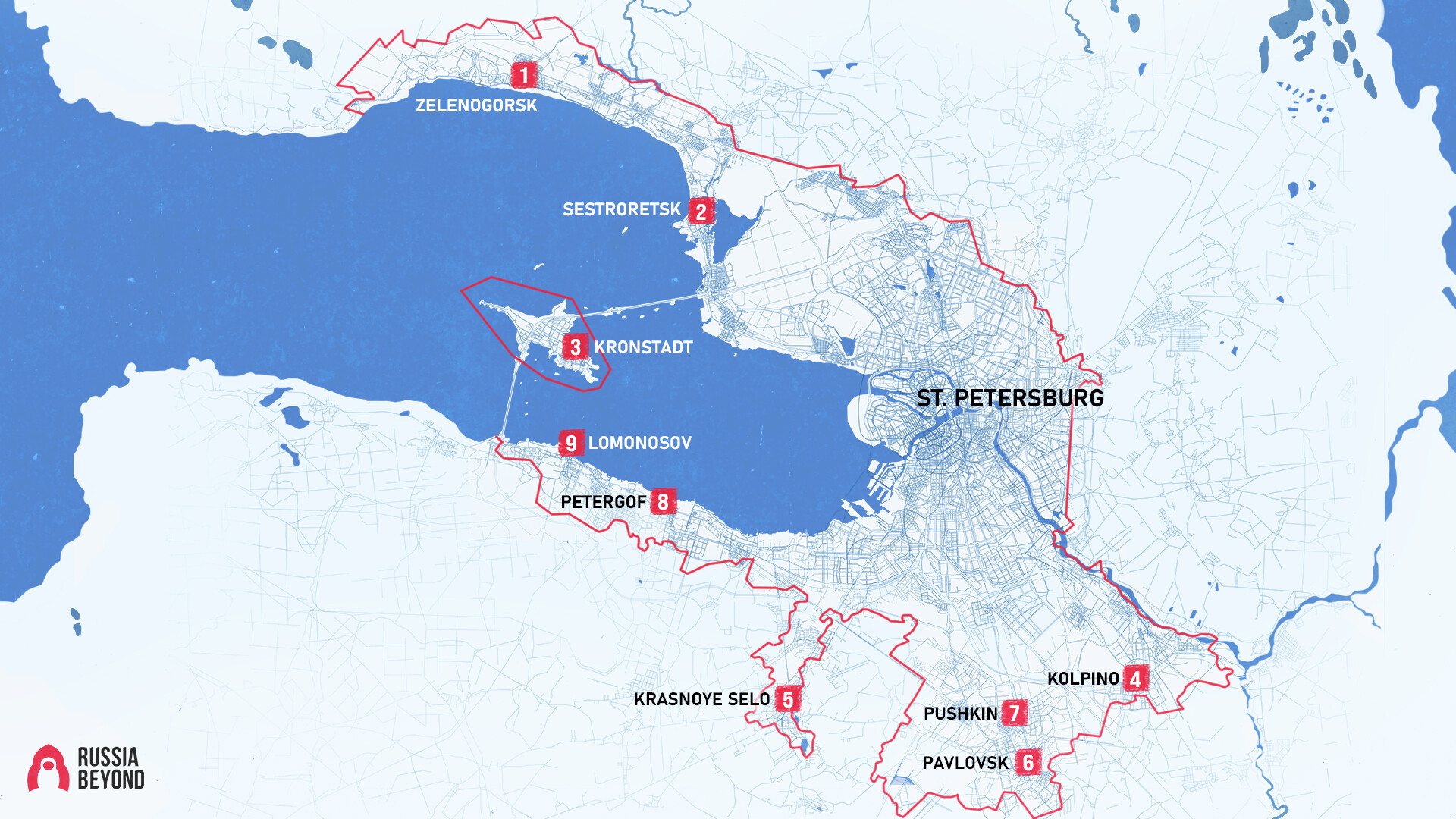
Located: 54 kilometers northwest from the center of St. Petersburg
We can find the first mention of Zelenogorsk back in the 16th century: then, it was the Swedish fishing village of Terijoki. It was subjugated into the Russian Empire in 1721, after Russia and Sweden signed the Treaty of Nystad that ended the Great Northern War. The majority of the city’s population were actually Finns.
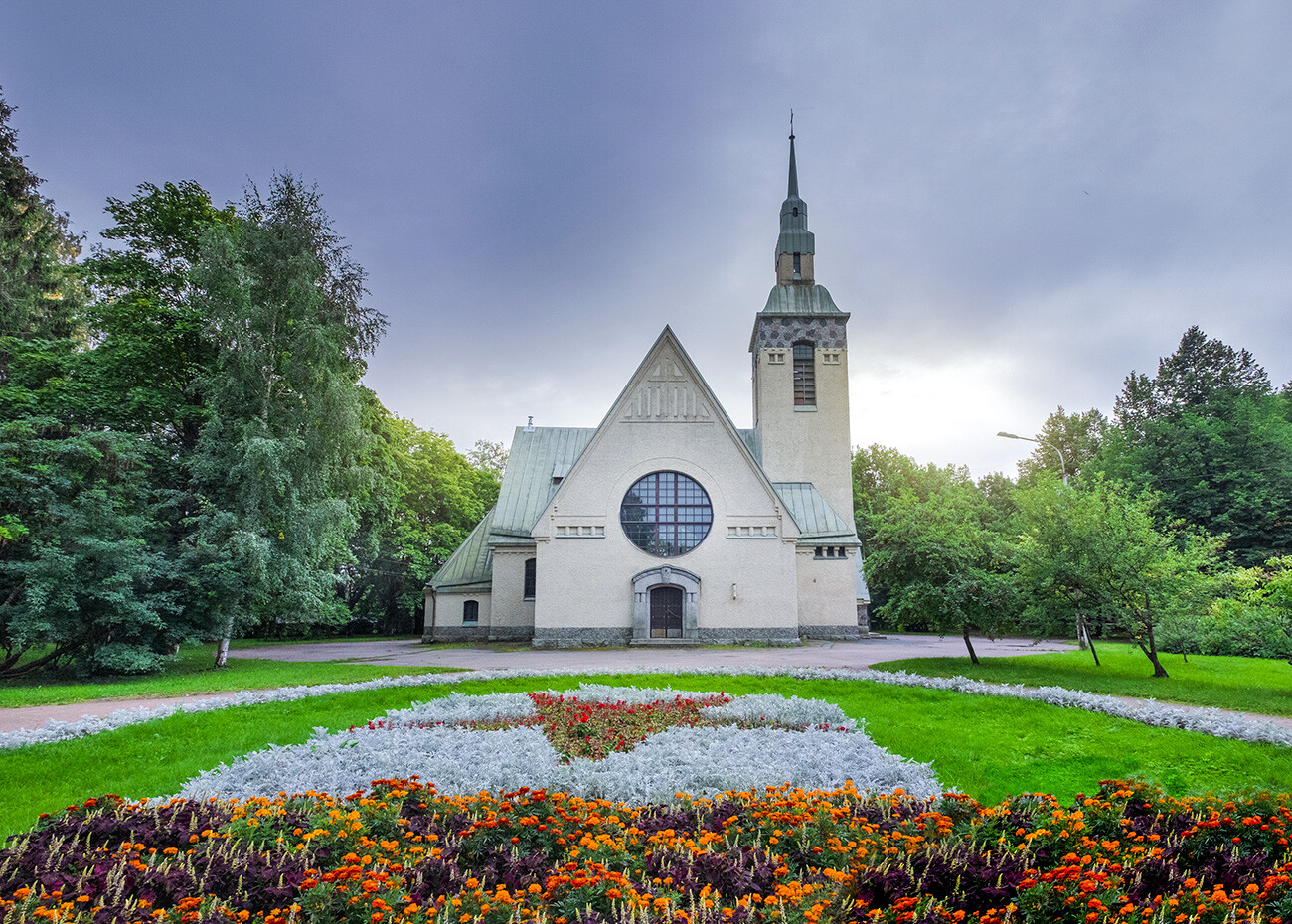
From 1918 to 1940, Terijoki was part of Finland and was transferred to the USSR as a result of the Winter War of 1939 -1940. During World War II, it was occupied again and became Soviet for good in 1944.
In 1946, Terijoki received its city status; in 1948, it was renamed Zelenogorsk.
Located: 39 kilometers northwest from the center of St. Petersburg
September 20, 1714, is considered the date of Sestroretsk’s founding, when Peter the Great visited the shores of the Gulf of Finland near the mouth of the Sestra River for the first time. Later, he built his residence there. In 1724, the Sestroretsk Arms Factory began operating there: in 1891, it produced the famous Mosin-Nagant rifle.
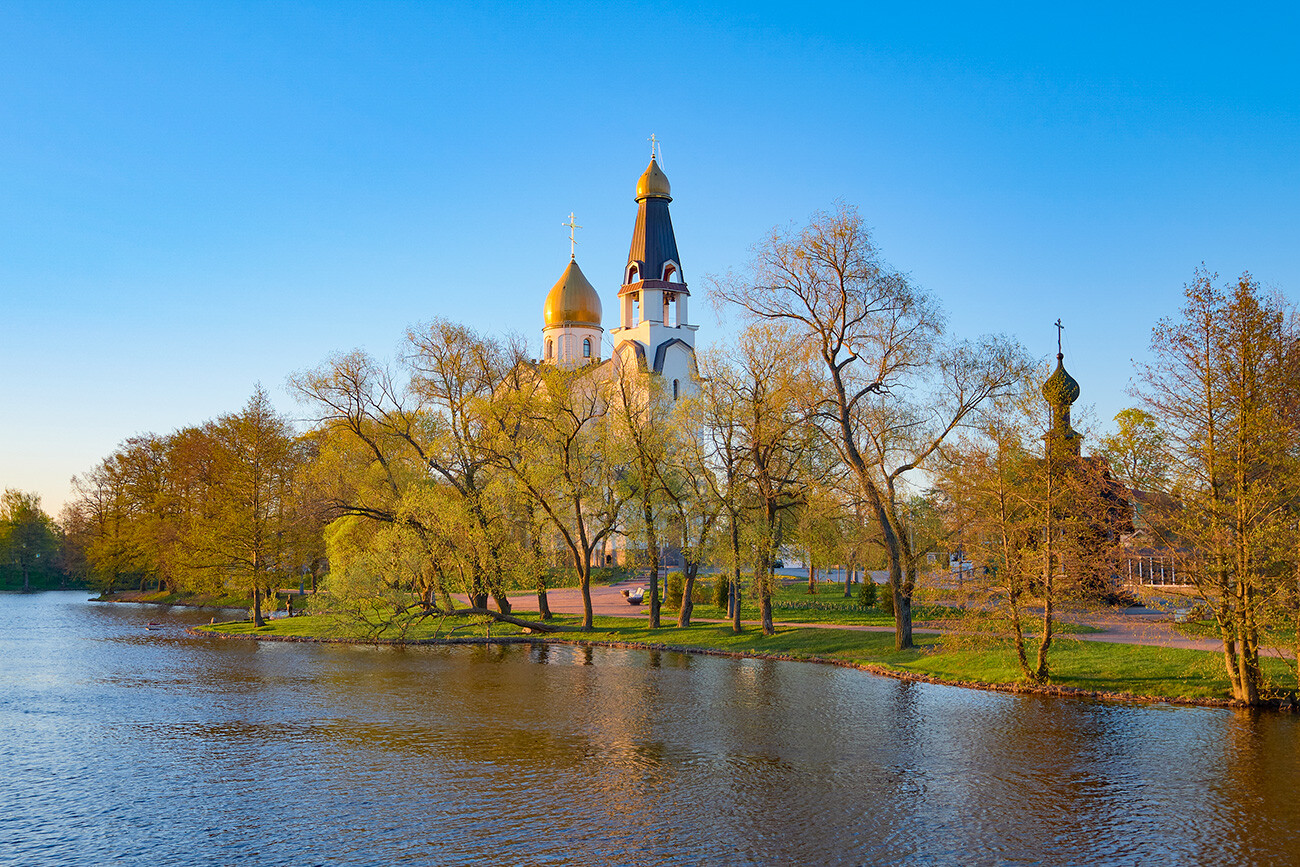
On June 16, 1925, Sestroretsk received its city status.
The coast of the Gulf of Finland from Sestroretsk to Zelenogorsk became a popular resort area back in the 19th century. Today, a lot of health spas still operate there.
Located: 50 kilometers northwest from the center of St. Petersburg
On May 18, 1704, the Kronshlot Fortress was consecrated near Kotlin Island, founded by the decree of Peter the Great. This date is also considered to be the day of the founding of Kronstadt. The fortress city Kronstadt itself was founded by Peter the Great on Kotlin Island on October 18, 1723.
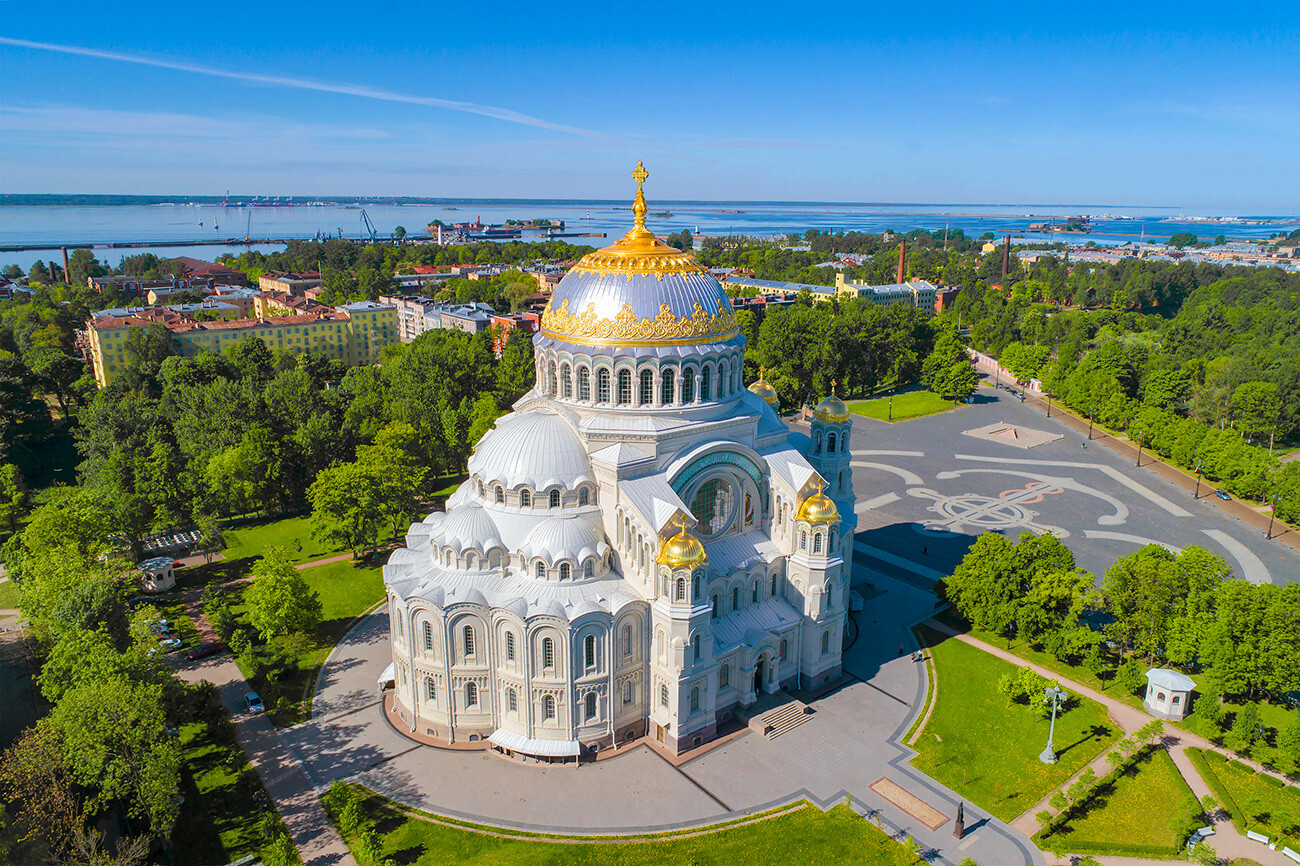
Kronstadt’s mission was to protect St. Petersburg from attacks from the sea. Throughout its entire history, it was and remains a navy base of the Baltic Fleet.
Located: 40 kilometers southeast from the center of St. Petersburg
In 1722, the Kolpino worker settlement appeared near a lumber mill on the Izhora River. Soon, iron mills, copper mills, anchor and hammer mills began opening near the initial mill. They worked to the needs of the Admiralty, so they were called ‘Izhora Admiralty Mills’.
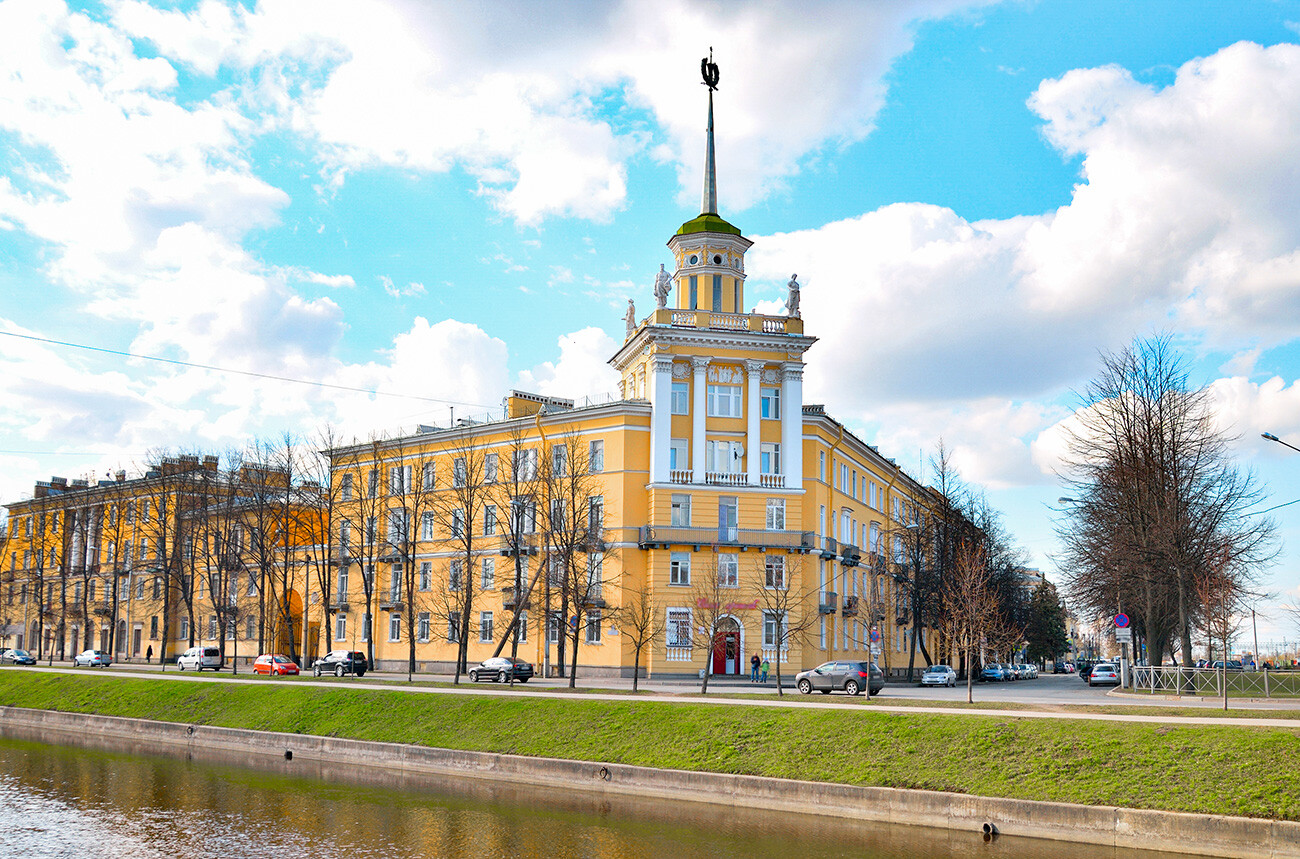
In 1803, all the enterprises were united into a machine-building plant. In total, these factories functioned for exactly 300 years.
Kolpino received its city status in 1912.
Located: 30 kilometers southwest from the center of St. Petersburg
The history of this city began in 1716 from a paper mill, founded by the decree of Peter the Great, which managed to stay in operation until 2003.
In the middle of the 18th century, Krasnoye Selo became the place for conducting military maneuvers; guard regiments of the St. Petersburg garrison were stationed there.
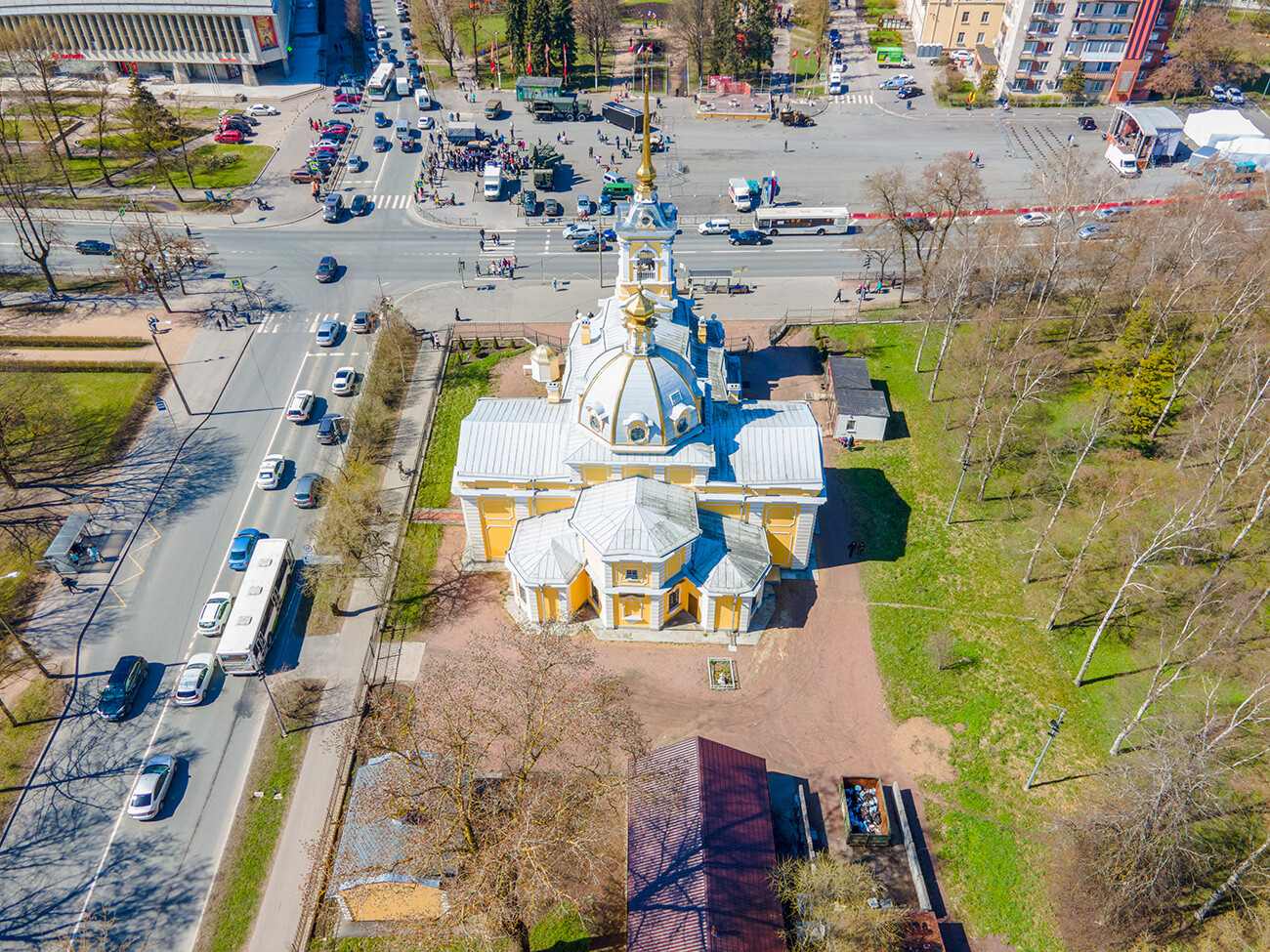
A century later, Krasnoye Selo secured its status as the summer military capital of the Russian Empire: a large military and educational complex appeared in it.
In 1925, Krasnoye Selo received its city status.
Located: 37 kilometers south from the center of St. Petersburg
On December 12, 1777, Empress Catherine the Great granted her son, future Emperor Paul, two villages on the shores of the Slavyanka River (25 kilometers south from the modern center of St. Petersburg). These territories received the name Pavlovskoye village.
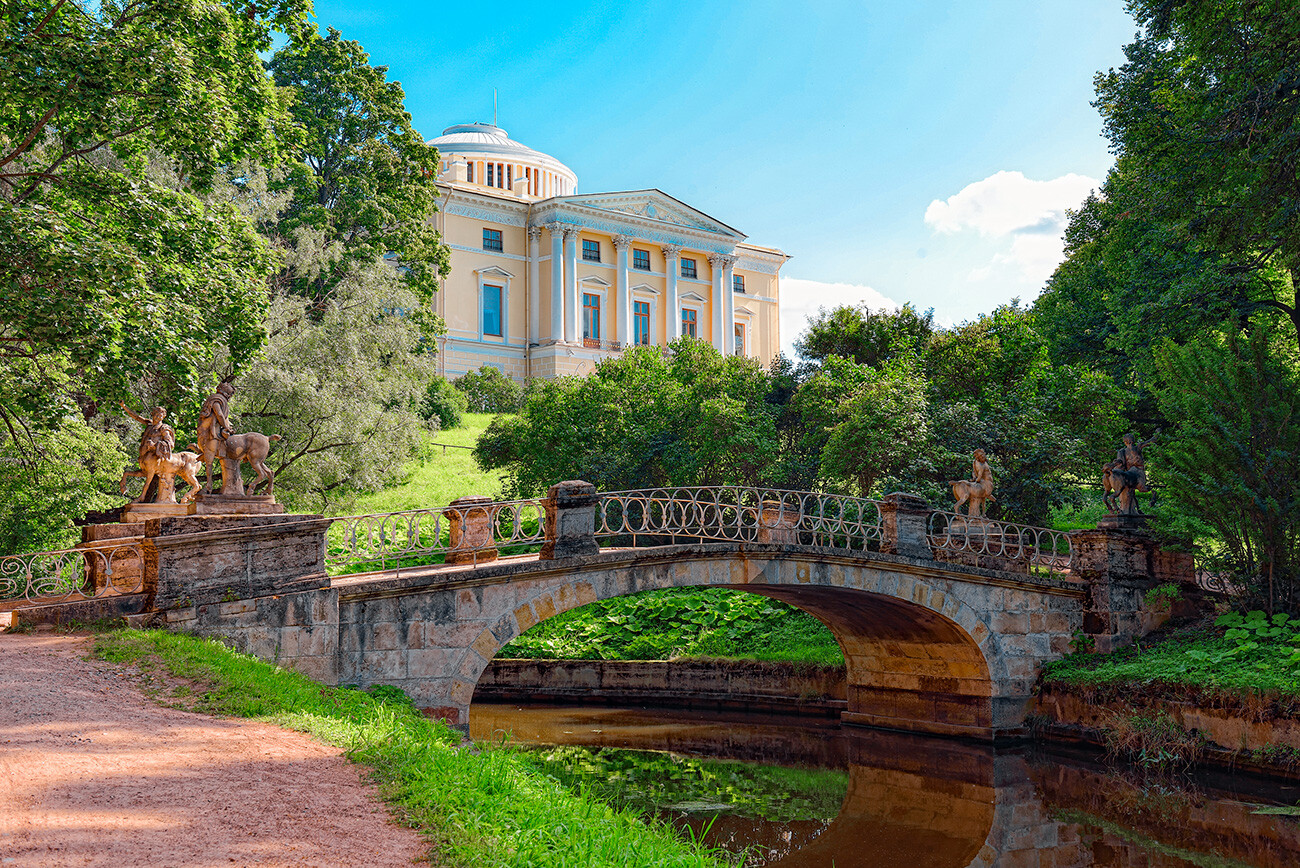
On November 12, 1796, a week after his ascension to the throne, Paul renamed the village to the city of Pavlovsk. From 1918 to 1944, it was called Slutsk – in honor of revolutionary Vera Slutskaya.
Located: 30 kilometers south from the center of St. Petersburg
In the 17th century, Swedish estate Saaris Moisio stood on the place where Pushkin would be. Russians called it ‘Sarskaya Mysa’.
After the Russian Empire subjugated territories during the course of the Great Northern War, Sarskaya Mysa received the name Sarskoye Selo. On July 5, 1710, Peter the Great gifted it to his future wife, Catherine Alekseyevna. With the beginning of the construction of the palace, the mysa received the high title of Tsarskoye Selo (‘Tsar’s Village’).
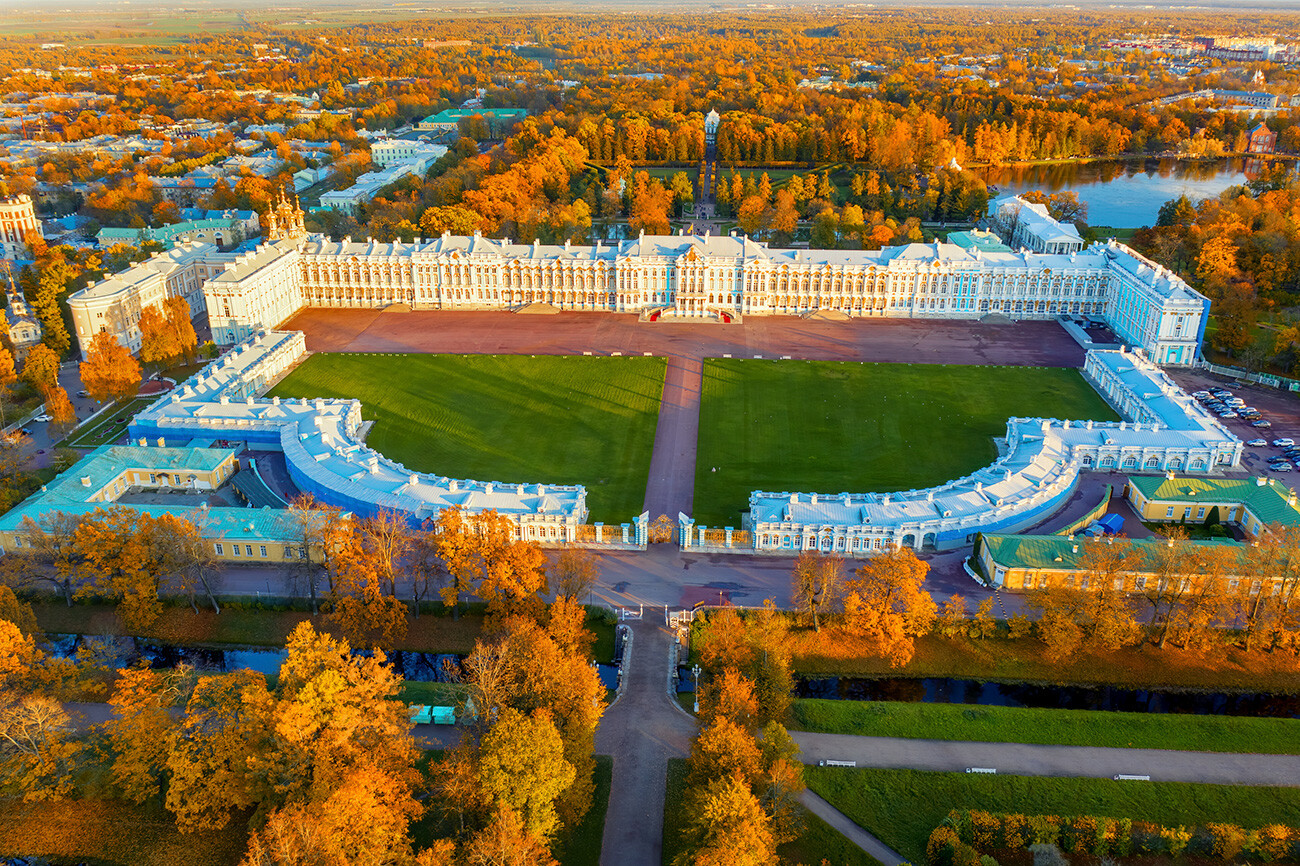
It received its city status in 1808. In 1918, Soviet authorities accommodated children’s ‘colonies’ (camps) in the former palaces, and renamed the city to Detskoye Selo (‘Children’s Village’).
On February 10, 1938, its name was changed to Pushkin – in honor of the 100th anniversary of the poet’s death.
Located: 40 kilometers southwest from the center of St. Petersburg
Until the 17th century, Finnish villages stood on the site of the future Petergof. In 1710, Peter the Great founded his country residence with a luxurious park and fountains. A settlement appeared nearby.
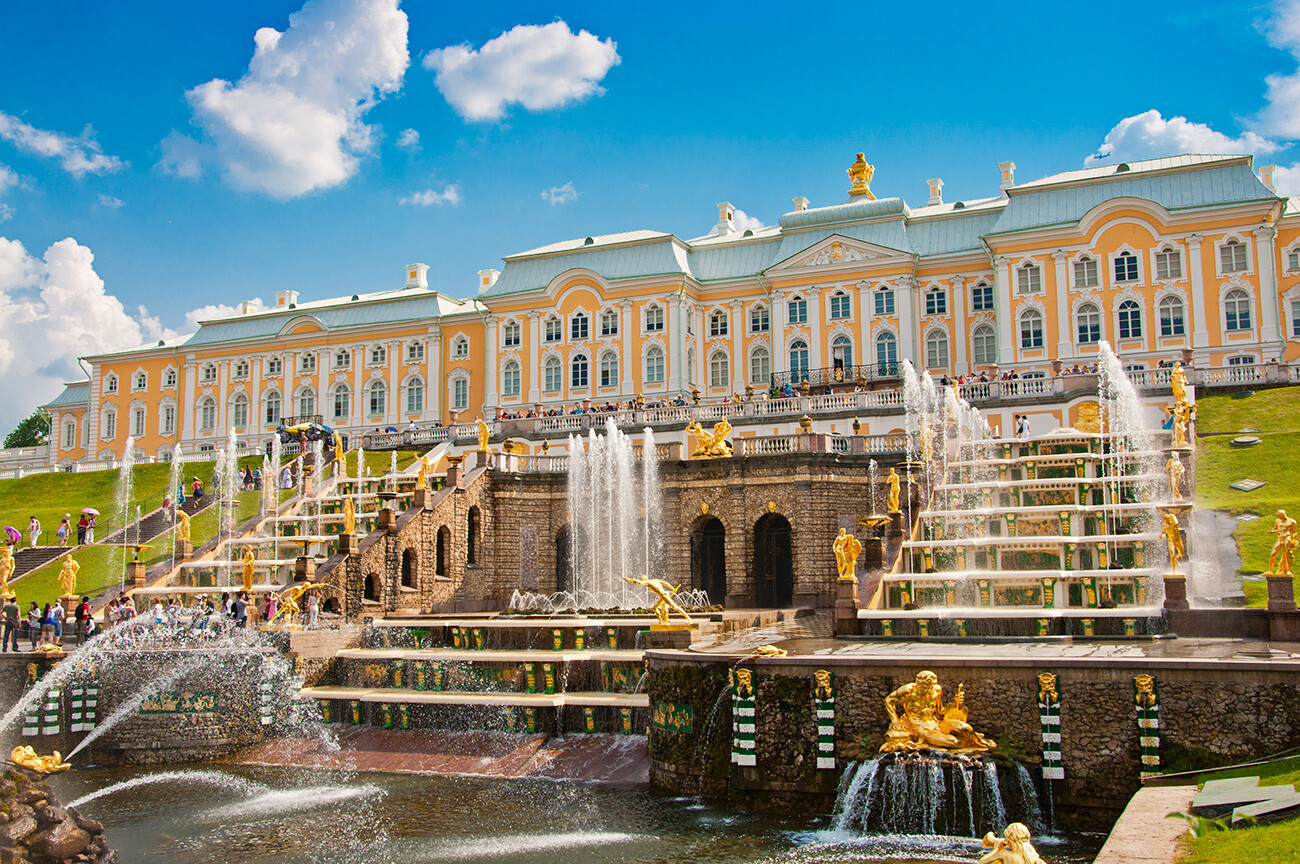
In 1721, a lapidary factory started operating in Petergof, where jewelry with various gemstones was made for the imperial family. After 1947, it changed its profile and began producing watches.
Petergof received its city status in 1762. Until 1917, it was an imperial summer residence. It sustained serious damage during the Nazi occupation during World War II. From 1944 to 2009, it bore the name Petrodvorets (‘Peter’s Palace’).
Located: 52 kilometers southwest from the center of St. Petersburg
In 1710, Peter the Great granted the land on the southern coast of the Gulf of Finland to Prince Alexander Menshikov and the latter built a residence there called ‘Oranienbaum’ (from Dutch, meaning ‘Orange Tree’). To the east of the residence, a village sprung up that slowly turned into a large palace settlement.
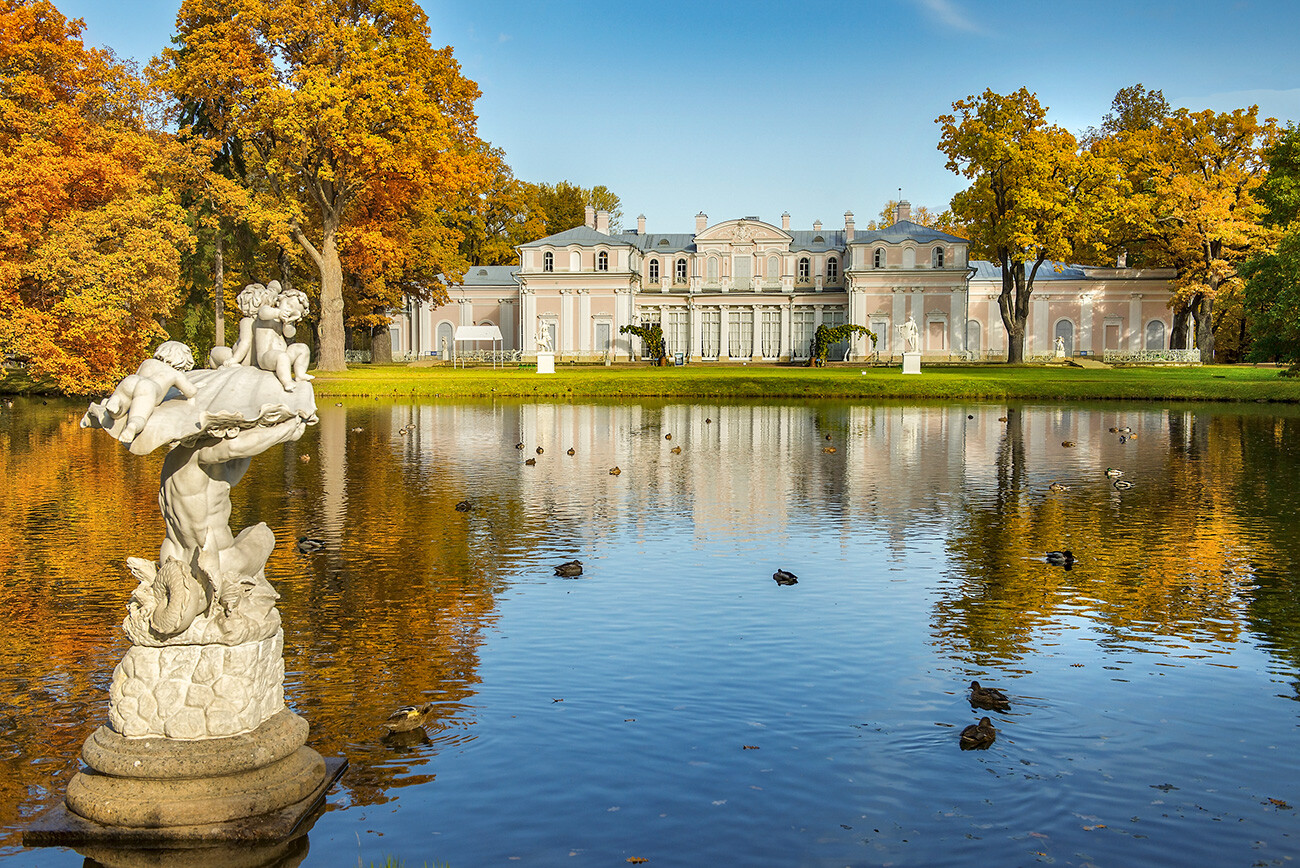
From 1743 to 1761, future Emperor Peter III was the owner of Oranienbaum. Until the Bolshevik Revolution, it belonged to the members of the imperial family and dukes Mecklenburg-Strelitz, who intermarried with the Romanovs.
In 1948, the city was renamed Lomonosov: in the middle of the 18th century, scientist Mikhail Lomonosov created the first factory in the world that produced bugle beads, seed beads, and smalt for mosaics.
Dear readers,
Our website and social media accounts are under threat of being restricted or banned, due to the current circumstances. So, to keep up with our latest content, simply do the following:
If using any of Russia Beyond's content, partly or in full, always provide an active hyperlink to the original material.
Subscribe
to our newsletter!
Get the week's best stories straight to your inbox